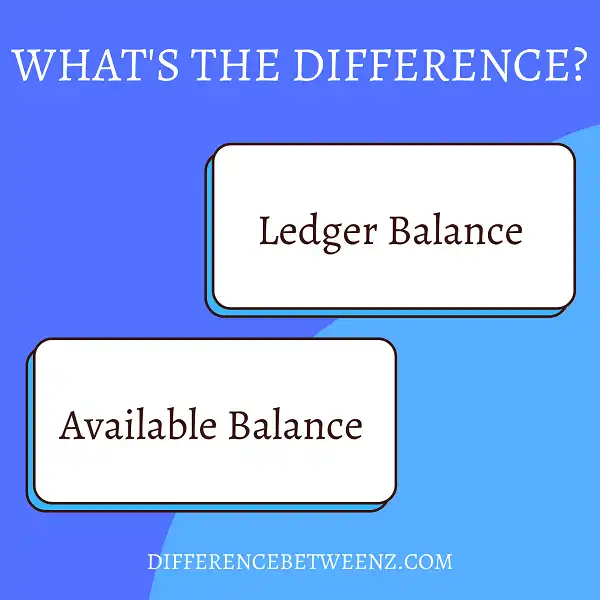What’s the difference between your available balance and ledger balance? Many people don’t know the answer to this question, but it’s important to understand. Your available balance is the amount of money you have in your account that can be withdrawn immediately.
Your ledger balance, on the other hand, reflects all of the transactions that have taken place in your account – not just the ones that are currently showing in your available balance. This means that if there are any pending transactions, they will not be reflected in your available balance but will be included in your ledger balance. Knowing the difference between these two balances is crucial for accurately tracking your finances.
What is the Available Balance?
Available balance is the amount of money in your account that is available to you to spend or withdraw. This includes any funds that have been deposited into your account as well as any credit that may be available to you.
The available balance does not include any funds that are being held by the bank, such as for overdraft protection or to cover fees. The available balance also does not include any checks that have been deposited but have not yet cleared.
To find out your available balance, you can check your online banking statement or contact your bank directly. Knowing your available balance can help you to budget your spending and avoid overdrawing your account.
What is Ledger Balance?
Ledger Balance is the balance in a Ledger account after all transactions have been posted. A Ledger account is an accounting record of all financial transactions that have been made by a particular person, company, or other entity. The Ledger Balance includes all debit and credit entries. The Ledger Balance does not reflect any outstanding checks or deposits that have not yet been processed.
- A check is a draft drawn on a bank and payable to a specific person or entity. A deposit is a money or other items placed into a financial institution for safekeeping. Outstanding checks and deposits are reflected on the Ledger Balance once they have been processed.
- The Ledger Balance is important because it provides an accurate record of all financial transactions. This information can be used to make informed decisions about spending, investing, and saving. Ledger Balances are also used to prepare financial statements.
- Financial statements provide information about a company’s financial position, performance, and cash flow. Ledger Balances are typically updated daily but may be updated more frequently depending on the needs of the business.
Difference between Available Balance and Ledger Balance
Available balance and ledger balance are terms that are used to describe the balances in a person’s bank account.
- The available balance is the amount of money that is available to be withdrawn from an account, while the ledger balance is the total amount of money that is in an account.
- The difference between these two terms is that the ledger balance includes funds that have been deposited but not yet cleared, while the available balance only includes funds that have been cleared.
- Ledger balances are often higher than available balances because it can take a few days for deposits to be cleared by the bank. Available balances are what people typically use when they are trying to determine how much money they have to spend because it represents the funds that are immediately accessible.
Knowing the difference between these two types of balances can help people better manage their finances and avoid overdraft fees.
Conclusion
The terms “available balance” and “ledger balance” are often used interchangeably, but they actually have different meanings. The available balance is the amount of money that is currently accessible in your account, while the ledger balance is the total amount of money that has been deposited into your account over time. It’s important to understand the difference between these two balances because they can affect how you manage your finances. For example, if you’re trying to save for a specific goal, you may want to focus on your available balance rather than your ledger balance.


